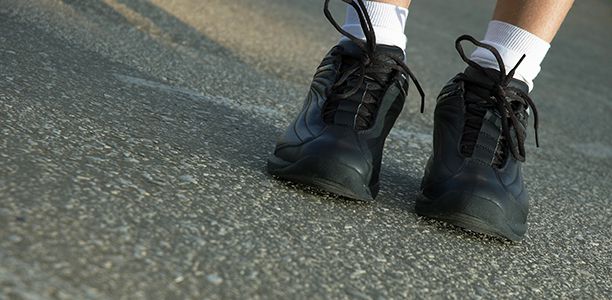Getting the right advice for buying new school shoes could save parents money and more importantly their kids from experiencing foot pain and foot problems and reducing their physical activity.
University of Western Sydney podiatry researcher, Dr Stefania Penkala, says there are some simple steps to choosing the right shoe for your child.
- The heel should fit snugly
- The forefoot needs to be flexible so the stepping action isn’t hindered
- Adequate width and length to accommodate the toes
- Lace up shoes offer better support and fit
- Leather shoes, with a leather liner, are more breathable – reducing the chances of skin irritation, sweaty feet and fungal infections
- Shoe fitting staff can assist you chose the best style and shoe fit for your child’s foot
“It is important to ensure children are in comfortable and well-fitting shoes.
“Check the foot, ankle and knee are in alignment and the foot fits neatly under the knee,” says Dr Penkala, Senior Lecturer in the Podiatric Medicine program at UWS.
“Monitor your children throughout the year and don’t be tempted to hold off on buying new shoes until the new school term or year.”
“Children’s feet can grow one centimetre longer each year, but growth spurts don’t always coincide with the summer holidays or the shoe sales,” says Dr Penkala.
Studies show almost a third of school children aged four to 12 years experienced a foot problem with some of these children stopping physical activities such as walking, jumping and playing because their feet hurt.
“One of the best ways parents can detect potential foot problems in their children is simply to watch them closely – parents know when something isn’t quite right with their child,” says Dr Penkala.
Things to look out for include walking oddly, being clumsy, withdrawing from physical activities. Limping and pain can also indicate something is not right.
“Feet are for life and it helps to make a good start from childhood.”
Dr Penkala says seek advice from your local podiatrist or other health professional or make an appointment to visit the UWS student UniClinic if you are concerned.
(Source: University of Western Sydney)










